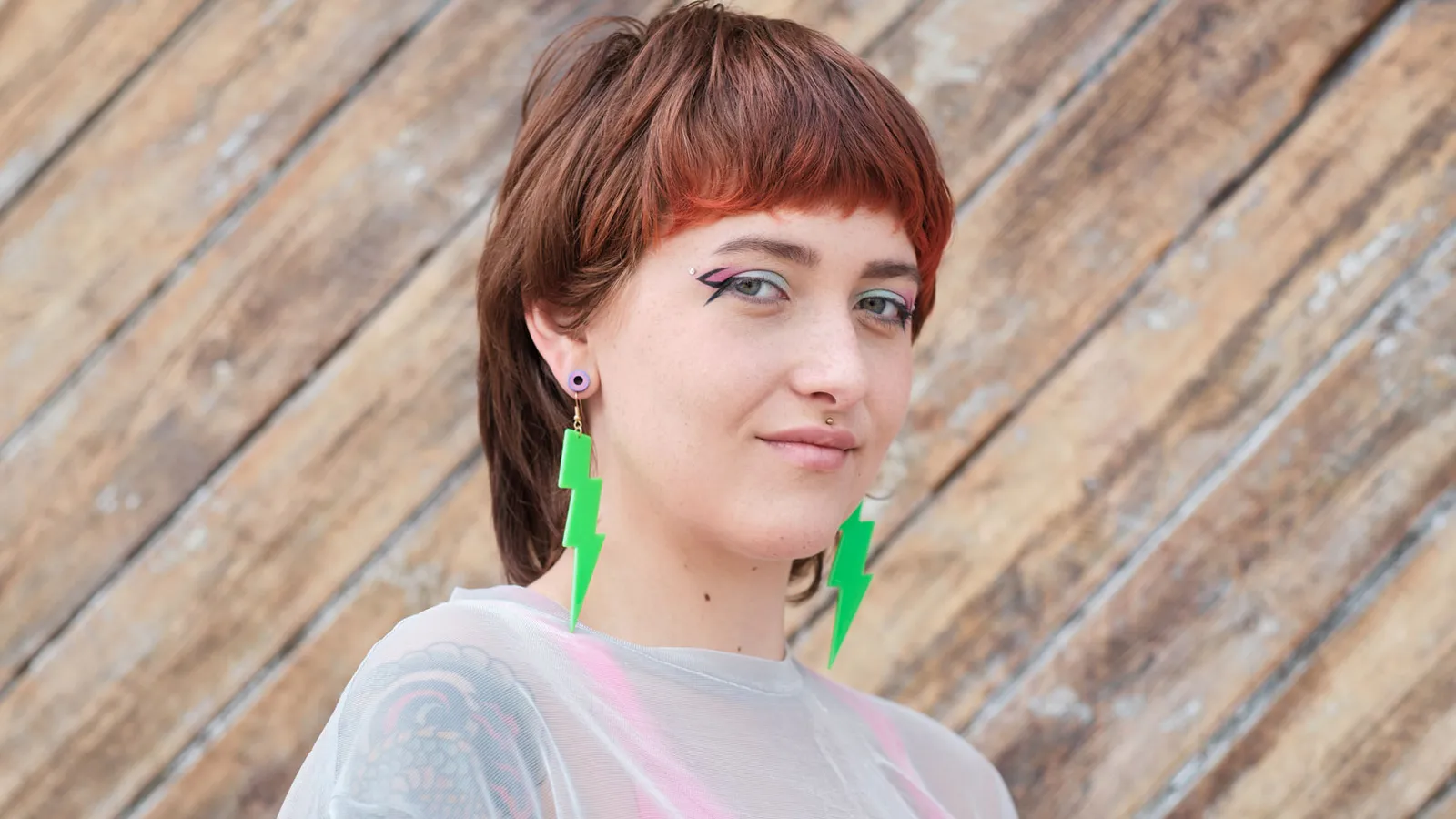How young people are shaking off gender binaries
Many Gen Zers are increasingly breaking out of the idea that gender means only 'man' or 'woman' – and these attitudes are having an impact.

Like many members of Gen Z, 20-year-old Rain Ashley Preece views gender outside of the Western established norms.
“I think it is limiting everyone in society by saying there are only two genders – male and female,” says Cardiff-based Preece, who identifies as transgender male and uses he/they pronouns. “People may feel like they are both, neither or a bit of one or the other. I don’t personally feel completely masculine, even though I mostly see myself as a boy.” A series of VICE Voices surveys, conducted in 2019, shows many younger people share Preece’s views on gender: 41% of the survey’s respondents (all Gen Z) said they identified as “neutral on the spectrum of masculinity and femininity”. Fifty-five percent also said gender labels don’t help them “define who they truly are”, and 62% “felt strongly that people should be able to use any identity label with which they feel comfortable”.
Attitudes around gender were already changing from Baby Boomers to millennials, but as Gen Z has grown up, they’ve helped facilitate even larger cultural and social shifts in these notions. It’s not that younger people are no longer identifying as cisgender or male or female – rather, they’re less likely to take for granted that gender is binary. These views have helped some young people find their voices, and also opened a dialogue about the complexities of gender identity across generations.
‘All kinds of lived experiences’
Gender is typically assigned at birth as either male or female, corresponding with a new-born’s sex organs. But younger generations are increasingly rejecting that rigid binary, in favour of the belief that gender exists on a spectrum of possible identities.
“I feel like everyone experiences gender a little differently, and it's almost impossible to place people in a definitive box,” says 21-year-old Carden Cappi, a student who identifies as “trans, demiboy and genderqueer” and uses they/them pronouns. “The idea of a spectrum enables people to be more individual and express their identity and experience a little better.”
Approaching gender outside of a strict binary means some people have found a wider variety of ways to express themselves. This doesn’t look like a “gender-neutral beige and grey landscape we often see when discussing gender”, says Lisa Kenney, CEO of Reimagine Gender, a non-profit that helps organisations and other groups address new understandings of gender. “Instead, I think it is a vibrant world where our gender reflects who we are, rather than who we have been told to be.”
People may feel like they are both, neither or a bit of one or the other. I don’t personally feel completely masculine, even though I mostly see myself as a boy – Rain Ashley Preece
As Kenney says, “If there are ‘boy colours' and ‘girl colours’, different activities, interests or careers for men and women, then there are emotions and ideas and speaking styles for men and women, too.” Whereas traditional societal expectations of gender norms – what is ‘masculine’ versus ‘feminine’ – can be limiting in terms of personal expression, whereas a gender spectrum allows for a greater inclusion of all kinds of lived experiences.
For Gen Z, the stereotypes associated with traditional gender roles feel less and less appropriate and even relevant to their daily lived experiences. “Clothes and hairstyles do not define your gender – only you define it,” says Preece, who serves as an ambassador for the UK-based LGBT+ youth charity Just Like Us. “I don’t believe that gender should need a label. It helps explain to others how you identify, but it shouldn’t restrict or limit the individual.”
‘Most Gen Z will just go with it’
Jessica Hille, the assistant director for education at The Kinsey Institute in Indiana, US, explains that “all definitions and categories of gender are socially and historically situated, created by people in particular cultural contexts”. So, Gen Z’s different understanding of gender is part of an “ongoing development”, in which views and attitudes are constantly evolving with time.
“From my experience, Gen Z is more accepting and less challenging to your identity when you come out,” says Cappi, who also serves as an ambassador for Just Like Us. “You might say: ‘Hey, I identify as this, could you please use this name and pronouns for me?’ Most Gen Z will just go with it, whereas I’ve experienced way more questioning, hesitancy and challenges from other generations.”
For younger generations, the move away from viewing gender as a strict binary has been significantly influenced by the internet and social media. “Contemporary teens now walk through the world with a mini-computer in their hands,” says Lisa Diamond, psychology and gender-studies professor at The University of Utah, US.
This has given young people access to endless information about gender identities and expressions – a visibility prior generations simply didn’t have access to. “Those of us over the age of 50 had to unlearn all the myths about gender and sexuality that we learned growing up,” says Diamond. “Gen Z and millennials grew up already doubting these myths, because they could see counterexamples in the palm of their hands.”
This has given younger people an entirely new avenue through which to learn and think about gender. “There’s no need to wait for a doctor or therapist to explain or ‘diagnose’ your experience in a top-down system,” says Hille. Organic online communities and networks can introduce new concepts and terminology about gender, and facilitate new conversations. “I think this has promoted a greater understanding and acceptance of experiences outside the gender binary.”
Optimism for the future?
Gen Z’s expanded definition of gender is personally meaningful to many young people, but also has widespread implications across industries and institutions.
For instance, gender-fluid looks are “gaining greater traction amid changing consumer attitudes toward gender identity and expression,” per consulting firm McKinsey and Company’s State of Fashion 2022 report. This is important for not only Gen Z, but also the brands that serve them: Gen Z’s purchasing power in the US is estimated at $360 billion. More gender-neutral fashion brands are cropping up in response to these evolving views, too.
Gen Z has noticed. “Companies are getting there in making their services more accepting – for example my bank … let me change my name from my previous name to my chosen name,” says Preece. Though he describes the process as “long and sometimes uncomfortable”, he still calls these institutions recognizing him as male “a positive start.”
Still, even as younger generations embrace a widened gender spectrum as a core part of their experiences, broader society does not necessarily see things the same way. For example, in the US, Diamond points out new laws restricting rights pertaining to gender identity. And earlier this year, Hungary passed a law banning trans people from legally changing their gender.
Despite these setbacks, Cappi is optimistic. They think their generation has potential to push back against these voices. “I am hopeful that with Gen Z going into the workplace and politics in the coming years, there will be a positive change in legislation, acceptance and celebration of gender diversity."
-bbc







